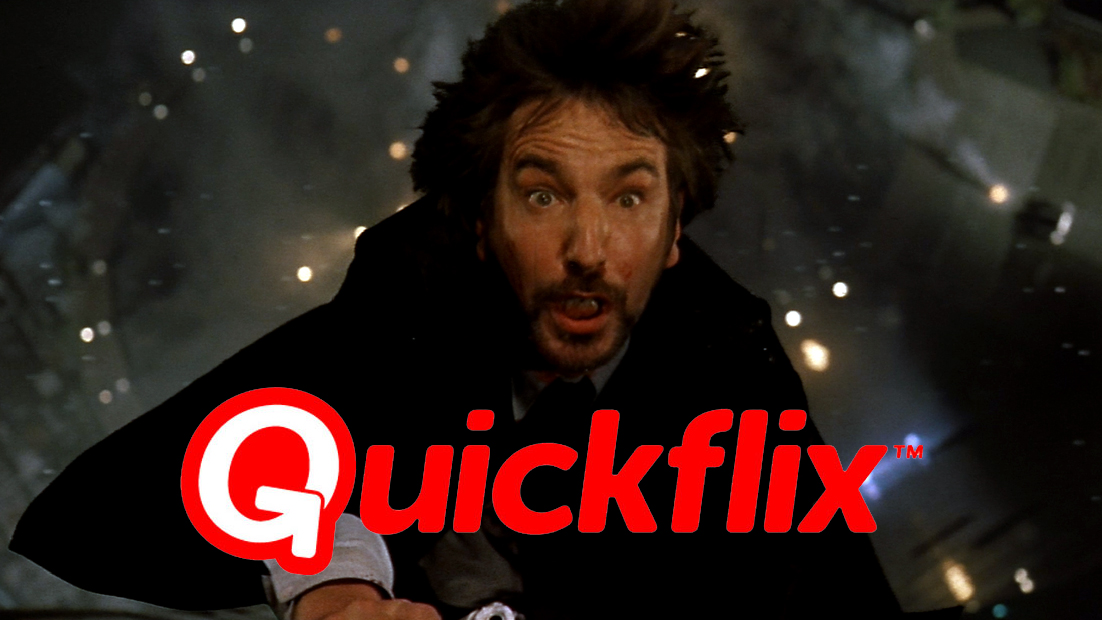Quick, Quickflix: It's time to give yourself the flick
The time for SVOD seppuku has arrived

For the past six months, Australia has been bathing in a luxurious jacuzzi of video on demand services.
Perfectly warm Netflix water, refreshingly soothing Stan bubbles and a cold glass of Presto sparkling to set the atmosphere.
But hidden in the water, just below the surface, is the decomposing remains of Australia's first legitimate streaming service: Quickflix.
While the stench is yet to really hit our nostrils, it's still well past time for the pioneering service to drag its corpse out of the hot tub before it ruins the experience for everyone.
Hot Tub Time Machine
It wasn't always this way though. Back in 2011, Quickflix was our biggest hope for a local version of Netflix. From the name to the DVD mail rental approach, Quickflix promised a local version of the impressive streaming service Netflix was delivering in the US.
For $15 a month, you could get unlimited movie streaming on the service. Naturally at launch, the selection of movies wasn't huge (or great), but the fledgling company promised massive growth.
And the promise improved a few months later when HBO – the US network behind stellar hits like The Sopranos and Curb your Enthusiasm – invested $10 million in Quickflix shortly after signing a distribution deal.
Get daily insight, inspiration and deals in your inbox
Sign up for breaking news, reviews, opinion, top tech deals, and more.
But despite having apps on a wide range of platforms, plus some of the most impressive shows available for streaming, Quickflix never really took off.
There are probably many reasons for this, but for me it comes down to three key problems with the platform. Firstly, streaming quality was average, especially on larger TVs. When a program was available in HD, it wasn't immediately obvious, and it could only be accessed on certain platforms.
The second big challenge was the user interface, which dated quickly and never quite reached the refined ease of use that saw people flock to Netflix for.
But finally, the most important thing holding back Quickflix was its content selection. When the streaming platform first launched, the goal was 1,000 movies. When I reviewed the platform for techradar back in February, there were only 485 movies and 413 TV series, many of which would be considered average quality, while even the decent stuff was old.
The thin red line
When HBO bought a chunk of Quickflix stock, things looked promising for the fledgling streaming service. But less than two years later, the US giant sold its stock to Channel 9, which admitted the buy was "opportunistic".
The fact is that since 2012, the company has been bleeding money. The 2012/13 financial year saw a loss of $6.4 million which jumped to a $10.1 million loss in 2013/14.
In the first half of 2014/15, the company continued to slide, posting a loss of $8.6 million in the first six months – before Stan or Netflix even entered the Australian market.
The numbers are only half of this tale of woe. Also littering the Quickflix Google News search results for the past couple of years are story after story of false starts and failed initiatives.
Following HBO's share sale, the company's plea to subscribers to buy shares was a somewhat obvious act of desperation. After a plan to raise $5.7 million in cash from investors only managed to raise $650,000, or 11 percent of its target, Quickflix's situation seemed somewhat dire.
But things got worse. After a trading halt to announce a reseller agreement with Presto, turning Quickflix into a platform for a newer, better streaming offering, things looked up for the company.
However, that promising step forward lasted less than three months, when Quickflix went into another trading halt to announce the deal had fallen through.
To mitigate the disappointment, Quickflix announced a distribution deal with an unnamed Chinese firm, a strategy that lasted a few weeks before being canned.